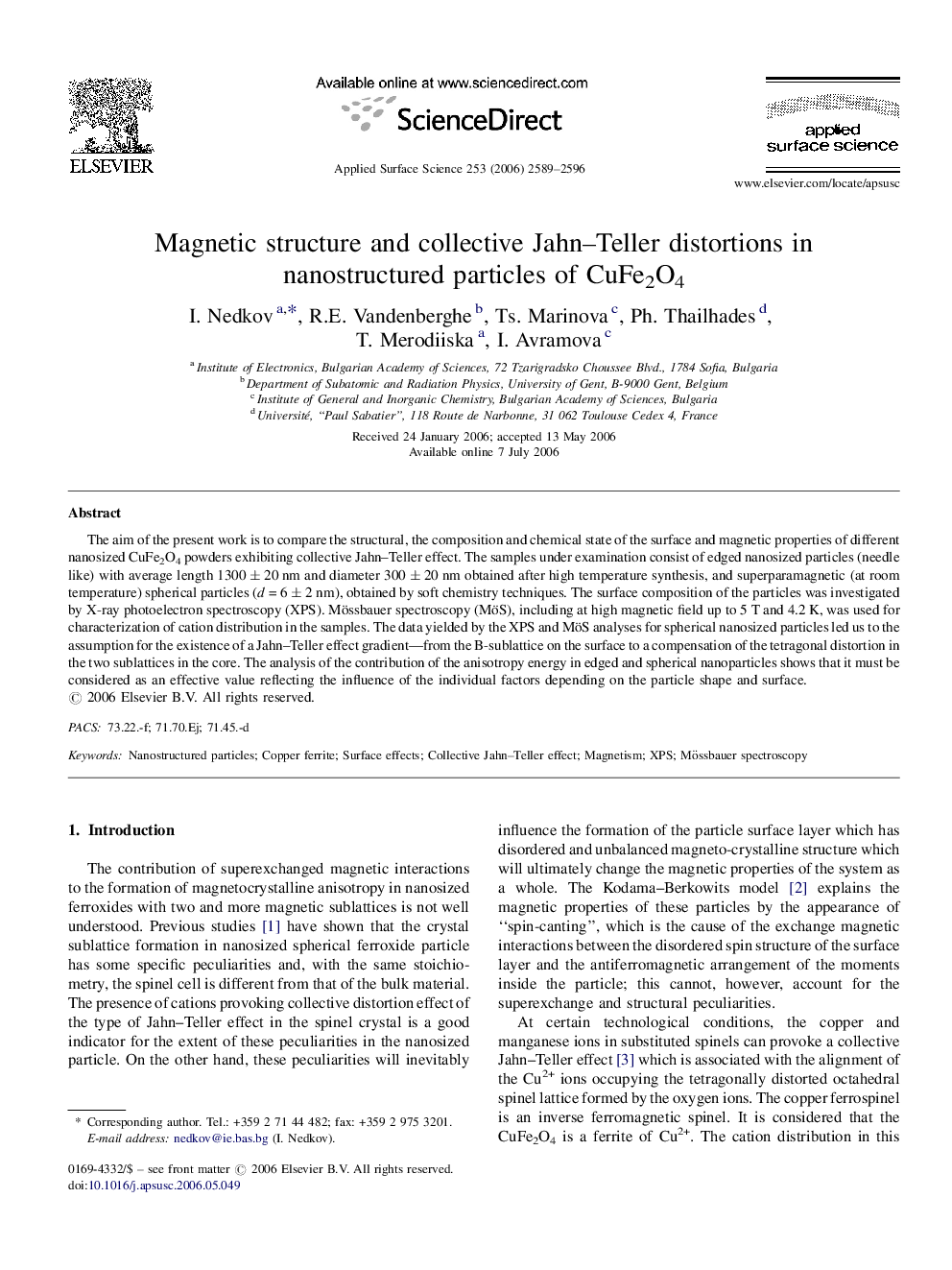| Article ID | Journal | Published Year | Pages | File Type |
|---|---|---|---|---|
| 5369934 | Applied Surface Science | 2006 | 8 Pages |
Abstract
The aim of the present work is to compare the structural, the composition and chemical state of the surface and magnetic properties of different nanosized CuFe2O4 powders exhibiting collective Jahn-Teller effect. The samples under examination consist of edged nanosized particles (needle like) with average length 1300 ± 20 nm and diameter 300 ± 20 nm obtained after high temperature synthesis, and superparamagnetic (at room temperature) spherical particles (d = 6 ± 2 nm), obtained by soft chemistry techniques. The surface composition of the particles was investigated by X-ray photoelectron spectroscopy (XPS). Mössbauer spectroscopy (MöS), including at high magnetic field up to 5 T and 4.2 K, was used for characterization of cation distribution in the samples. The data yielded by the XPS and MöS analyses for spherical nanosized particles led us to the assumption for the existence of a Jahn-Teller effect gradient-from the B-sublattice on the surface to a compensation of the tetragonal distortion in the two sublattices in the core. The analysis of the contribution of the anisotropy energy in edged and spherical nanoparticles shows that it must be considered as an effective value reflecting the influence of the individual factors depending on the particle shape and surface.
Keywords
Related Topics
Physical Sciences and Engineering
Chemistry
Physical and Theoretical Chemistry
Authors
I. Nedkov, R.E. Vandenberghe, Ts. Marinova, Ph. Thailhades, T. Merodiiska, I. Avramova,
